-
EXECUTIVE SUMMARY
-
Market Overview
-
Key Findings
-
Market Segmentation
-
Competitive Landscape
-
Challenges and Opportunities
-
Future Outlook
-
MARKET INTRODUCTION
-
Definition
-
Scope of the study
- Research Objective
- Assumption
- Limitations
-
RESEARCH METHODOLOGY
-
Overview
-
Data Mining
-
Secondary Research
-
Primary Research
- Primary Interviews and Information Gathering Process
- Breakdown of Primary Respondents
-
Forecasting Model
-
Market Size Estimation
- Bottom-Up Approach
- Top-Down Approach
-
Data Triangulation
-
Validation
-
MARKET DYNAMICS
-
Overview
-
Drivers
-
Restraints
-
Opportunities
-
MARKET FACTOR ANALYSIS
-
Value chain Analysis
-
Porter's Five Forces Analysis
- Bargaining Power of Suppliers
- Bargaining Power of Buyers
- Threat of New Entrants
- Threat of Substitutes
- Intensity of Rivalry
-
COVID-19 Impact Analysis
- Market Impact Analysis
- Regional Impact
- Opportunity and Threat Analysis
-
DAIRY ALTERNATIVES PRODUCTS MARKET, BY PRODUCT TYPE (USD BILLION)
-
Almond Milk
-
Soy Milk
-
Oat Milk
-
Coconut Milk
-
Rice Milk
-
DAIRY ALTERNATIVES PRODUCTS MARKET, BY SOURCE (USD BILLION)
-
Nuts
-
Legumes
-
Grains
-
Seeds
-
Vegetables
-
DAIRY ALTERNATIVES PRODUCTS MARKET, BY PACKAGING TYPE (USD BILLION)
-
Cartons
-
Bottles
-
Pouches
-
Cans
-
DAIRY ALTERNATIVES PRODUCTS MARKET, BY DISTRIBUTION CHANNEL (USD BILLION)
-
Supermarkets
-
Online Stores
-
Health Food Stores
-
Convenience Stores
-
DAIRY ALTERNATIVES PRODUCTS MARKET, BY REGIONAL (USD BILLION)
-
North America
- US
- Canada
-
Europe
- Germany
- UK
- France
- Russia
- Italy
- Spain
- Rest of Europe
-
APAC
- China
- India
- Japan
- South Korea
- Malaysia
- Thailand
- Indonesia
- Rest of APAC
-
South America
- Brazil
- Mexico
- Argentina
- Rest of South America
-
MEA
- GCC Countries
- South Africa
- Rest of MEA
-
COMPETITIVE LANDSCAPE
-
Overview
-
Competitive Analysis
-
Market share Analysis
-
Major Growth Strategy in the Dairy Alternatives Products Market
-
Competitive Benchmarking
-
Leading Players in Terms of Number of Developments in the Dairy Alternatives Products Market
-
Key developments and growth strategies
- New Product Launch/Service Deployment
- Merger & Acquisitions
- Joint Ventures
-
Major Players Financial Matrix
- Sales and Operating Income
- Major Players R&D Expenditure. 2023
-
COMPANY PROFILES
-
Arla Foods
- Financial Overview
- Products Offered
- Key Developments
- SWOT Analysis
- Key Strategies
-
Pacific Foods
- Financial Overview
- Products Offered
- Key Developments
- SWOT Analysis
- Key Strategies
-
Danone
- Financial Overview
- Products Offered
- Key Developments
- SWOT Analysis
- Key Strategies
-
MALK Organics
- Financial Overview
- Products Offered
- Key Developments
- SWOT Analysis
- Key Strategies
-
Unilever
- Financial Overview
- Products Offered
- Key Developments
- SWOT Analysis
- Key Strategies
-
Nestle
- Financial Overview
- Products Offered
- Key Developments
- SWOT Analysis
- Key Strategies
-
Ripple Foods
- Financial Overview
- Products Offered
- Key Developments
- SWOT Analysis
- Key Strategies
-
Silk
- Financial Overview
- Products Offered
- Key Developments
- SWOT Analysis
- Key Strategies
-
Alpro
- Financial Overview
- Products Offered
- Key Developments
- SWOT Analysis
- Key Strategies
-
Minor Figures
- Financial Overview
- Products Offered
- Key Developments
- SWOT Analysis
- Key Strategies
-
Nutpods
- Financial Overview
- Products Offered
- Key Developments
- SWOT Analysis
- Key Strategies
-
Horizon Organic
- Financial Overview
- Products Offered
- Key Developments
- SWOT Analysis
- Key Strategies
-
Oatly
- Financial Overview
- Products Offered
- Key Developments
- SWOT Analysis
- Key Strategies
-
So Delicious Dairy Free
- Financial Overview
- Products Offered
- Key Developments
- SWOT Analysis
- Key Strategies
-
WhiteWave
- Financial Overview
- Products Offered
- Key Developments
- SWOT Analysis
- Key Strategies
-
APPENDIX
-
References
-
Related Reports
-
LIST OF TABLES
-
LIST OF ASSUMPTIONS
-
NORTH AMERICA DAIRY ALTERNATIVES PRODUCTS MARKET SIZE ESTIMATES & FORECAST, BY PRODUCT TYPE, 2019-2035 (USD BILLIONS)
-
NORTH AMERICA DAIRY ALTERNATIVES PRODUCTS MARKET SIZE ESTIMATES & FORECAST, BY SOURCE, 2019-2035 (USD BILLIONS)
-
NORTH AMERICA DAIRY ALTERNATIVES PRODUCTS MARKET SIZE ESTIMATES & FORECAST, BY PACKAGING TYPE, 2019-2035 (USD BILLIONS)
-
NORTH AMERICA DAIRY ALTERNATIVES PRODUCTS MARKET SIZE ESTIMATES & FORECAST, BY DISTRIBUTION CHANNEL, 2019-2035 (USD BILLIONS)
-
NORTH AMERICA DAIRY ALTERNATIVES PRODUCTS MARKET SIZE ESTIMATES & FORECAST, BY REGIONAL, 2019-2035 (USD BILLIONS)
-
US DAIRY ALTERNATIVES PRODUCTS MARKET SIZE ESTIMATES & FORECAST, BY PRODUCT TYPE, 2019-2035 (USD BILLIONS)
-
US DAIRY ALTERNATIVES PRODUCTS MARKET SIZE ESTIMATES & FORECAST, BY SOURCE, 2019-2035 (USD BILLIONS)
-
US DAIRY ALTERNATIVES PRODUCTS MARKET SIZE ESTIMATES & FORECAST, BY PACKAGING TYPE, 2019-2035 (USD BILLIONS)
-
US DAIRY ALTERNATIVES PRODUCTS MARKET SIZE ESTIMATES & FORECAST, BY DISTRIBUTION CHANNEL, 2019-2035 (USD BILLIONS)
-
US DAIRY ALTERNATIVES PRODUCTS MARKET SIZE ESTIMATES & FORECAST, BY REGIONAL, 2019-2035 (USD BILLIONS)
-
CANADA DAIRY ALTERNATIVES PRODUCTS MARKET SIZE ESTIMATES & FORECAST, BY PRODUCT TYPE, 2019-2035 (USD BILLIONS)
-
CANADA DAIRY ALTERNATIVES PRODUCTS MARKET SIZE ESTIMATES & FORECAST, BY SOURCE, 2019-2035 (USD BILLIONS)
-
CANADA DAIRY ALTERNATIVES PRODUCTS MARKET SIZE ESTIMATES & FORECAST, BY PACKAGING TYPE, 2019-2035 (USD BILLIONS)
-
CANADA DAIRY ALTERNATIVES PRODUCTS MARKET SIZE ESTIMATES & FORECAST, BY DISTRIBUTION CHANNEL, 2019-2035 (USD BILLIONS)
-
CANADA DAIRY ALTERNATIVES PRODUCTS MARKET SIZE ESTIMATES & FORECAST, BY REGIONAL, 2019-2035 (USD BILLIONS)
-
EUROPE DAIRY ALTERNATIVES PRODUCTS MARKET SIZE ESTIMATES & FORECAST, BY PRODUCT TYPE, 2019-2035 (USD BILLIONS)
-
EUROPE DAIRY ALTERNATIVES PRODUCTS MARKET SIZE ESTIMATES & FORECAST, BY SOURCE, 2019-2035 (USD BILLIONS)
-
EUROPE DAIRY ALTERNATIVES PRODUCTS MARKET SIZE ESTIMATES & FORECAST, BY PACKAGING TYPE, 2019-2035 (USD BILLIONS)
-
EUROPE DAIRY ALTERNATIVES PRODUCTS MARKET SIZE ESTIMATES & FORECAST, BY DISTRIBUTION CHANNEL, 2019-2035 (USD BILLIONS)
-
EUROPE DAIRY ALTERNATIVES PRODUCTS MARKET SIZE ESTIMATES & FORECAST, BY REGIONAL, 2019-2035 (USD BILLIONS)
-
GERMANY DAIRY ALTERNATIVES PRODUCTS MARKET SIZE ESTIMATES & FORECAST, BY PRODUCT TYPE, 2019-2035 (USD BILLIONS)
-
GERMANY DAIRY ALTERNATIVES PRODUCTS MARKET SIZE ESTIMATES & FORECAST, BY SOURCE, 2019-2035 (USD BILLIONS)
-
GERMANY DAIRY ALTERNATIVES PRODUCTS MARKET SIZE ESTIMATES & FORECAST, BY PACKAGING TYPE, 2019-2035 (USD BILLIONS)
-
GERMANY DAIRY ALTERNATIVES PRODUCTS MARKET SIZE ESTIMATES & FORECAST, BY DISTRIBUTION CHANNEL, 2019-2035 (USD BILLIONS)
-
GERMANY DAIRY ALTERNATIVES PRODUCTS MARKET SIZE ESTIMATES & FORECAST, BY REGIONAL, 2019-2035 (USD BILLIONS)
-
UK DAIRY ALTERNATIVES PRODUCTS MARKET SIZE ESTIMATES & FORECAST, BY PRODUCT TYPE, 2019-2035 (USD BILLIONS)
-
UK DAIRY ALTERNATIVES PRODUCTS MARKET SIZE ESTIMATES & FORECAST, BY SOURCE, 2019-2035 (USD BILLIONS)
-
UK DAIRY ALTERNATIVES PRODUCTS MARKET SIZE ESTIMATES & FORECAST, BY PACKAGING TYPE, 2019-2035 (USD BILLIONS)
-
UK DAIRY ALTERNATIVES PRODUCTS MARKET SIZE ESTIMATES & FORECAST, BY DISTRIBUTION CHANNEL, 2019-2035 (USD BILLIONS)
-
UK DAIRY ALTERNATIVES PRODUCTS MARKET SIZE ESTIMATES & FORECAST, BY REGIONAL, 2019-2035 (USD BILLIONS)
-
FRANCE DAIRY ALTERNATIVES PRODUCTS MARKET SIZE ESTIMATES & FORECAST, BY PRODUCT TYPE, 2019-2035 (USD BILLIONS)
-
FRANCE DAIRY ALTERNATIVES PRODUCTS MARKET SIZE ESTIMATES & FORECAST, BY SOURCE, 2019-2035 (USD BILLIONS)
-
FRANCE DAIRY ALTERNATIVES PRODUCTS MARKET SIZE ESTIMATES & FORECAST, BY PACKAGING TYPE, 2019-2035 (USD BILLIONS)
-
FRANCE DAIRY ALTERNATIVES PRODUCTS MARKET SIZE ESTIMATES & FORECAST, BY DISTRIBUTION CHANNEL, 2019-2035 (USD BILLIONS)
-
FRANCE DAIRY ALTERNATIVES PRODUCTS MARKET SIZE ESTIMATES & FORECAST, BY REGIONAL, 2019-2035 (USD BILLIONS)
-
RUSSIA DAIRY ALTERNATIVES PRODUCTS MARKET SIZE ESTIMATES & FORECAST, BY PRODUCT TYPE, 2019-2035 (USD BILLIONS)
-
RUSSIA DAIRY ALTERNATIVES PRODUCTS MARKET SIZE ESTIMATES & FORECAST, BY SOURCE, 2019-2035 (USD BILLIONS)
-
RUSSIA DAIRY ALTERNATIVES PRODUCTS MARKET SIZE ESTIMATES & FORECAST, BY PACKAGING TYPE, 2019-2035 (USD BILLIONS)
-
RUSSIA DAIRY ALTERNATIVES PRODUCTS MARKET SIZE ESTIMATES & FORECAST, BY DISTRIBUTION CHANNEL, 2019-2035 (USD BILLIONS)
-
RUSSIA DAIRY ALTERNATIVES PRODUCTS MARKET SIZE ESTIMATES & FORECAST, BY REGIONAL, 2019-2035 (USD BILLIONS)
-
ITALY DAIRY ALTERNATIVES PRODUCTS MARKET SIZE ESTIMATES & FORECAST, BY PRODUCT TYPE, 2019-2035 (USD BILLIONS)
-
ITALY DAIRY ALTERNATIVES PRODUCTS MARKET SIZE ESTIMATES & FORECAST, BY SOURCE, 2019-2035 (USD BILLIONS)
-
ITALY DAIRY ALTERNATIVES PRODUCTS MARKET SIZE ESTIMATES & FORECAST, BY PACKAGING TYPE, 2019-2035 (USD BILLIONS)
-
ITALY DAIRY ALTERNATIVES PRODUCTS MARKET SIZE ESTIMATES & FORECAST, BY DISTRIBUTION CHANNEL, 2019-2035 (USD BILLIONS)
-
ITALY DAIRY ALTERNATIVES PRODUCTS MARKET SIZE ESTIMATES & FORECAST, BY REGIONAL, 2019-2035 (USD BILLIONS)
-
SPAIN DAIRY ALTERNATIVES PRODUCTS MARKET SIZE ESTIMATES & FORECAST, BY PRODUCT TYPE, 2019-2035 (USD BILLIONS)
-
SPAIN DAIRY ALTERNATIVES PRODUCTS MARKET SIZE ESTIMATES & FORECAST, BY SOURCE, 2019-2035 (USD BILLIONS)
-
SPAIN DAIRY ALTERNATIVES PRODUCTS MARKET SIZE ESTIMATES & FORECAST, BY PACKAGING TYPE, 2019-2035 (USD BILLIONS)
-
SPAIN DAIRY ALTERNATIVES PRODUCTS MARKET SIZE ESTIMATES & FORECAST, BY DISTRIBUTION CHANNEL, 2019-2035 (USD BILLIONS)
-
SPAIN DAIRY ALTERNATIVES PRODUCTS MARKET SIZE ESTIMATES & FORECAST, BY REGIONAL, 2019-2035 (USD BILLIONS)
-
REST OF EUROPE DAIRY ALTERNATIVES PRODUCTS MARKET SIZE ESTIMATES & FORECAST, BY PRODUCT TYPE, 2019-2035 (USD BILLIONS)
-
REST OF EUROPE DAIRY ALTERNATIVES PRODUCTS MARKET SIZE ESTIMATES & FORECAST, BY SOURCE, 2019-2035 (USD BILLIONS)
-
REST OF EUROPE DAIRY ALTERNATIVES PRODUCTS MARKET SIZE ESTIMATES & FORECAST, BY PACKAGING TYPE, 2019-2035 (USD BILLIONS)
-
REST OF EUROPE DAIRY ALTERNATIVES PRODUCTS MARKET SIZE ESTIMATES & FORECAST, BY DISTRIBUTION CHANNEL, 2019-2035 (USD BILLIONS)
-
REST OF EUROPE DAIRY ALTERNATIVES PRODUCTS MARKET SIZE ESTIMATES & FORECAST, BY REGIONAL, 2019-2035 (USD BILLIONS)
-
APAC DAIRY ALTERNATIVES PRODUCTS MARKET SIZE ESTIMATES & FORECAST, BY PRODUCT TYPE, 2019-2035 (USD BILLIONS)
-
APAC DAIRY ALTERNATIVES PRODUCTS MARKET SIZE ESTIMATES & FORECAST, BY SOURCE, 2019-2035 (USD BILLIONS)
-
APAC DAIRY ALTERNATIVES PRODUCTS MARKET SIZE ESTIMATES & FORECAST, BY PACKAGING TYPE, 2019-2035 (USD BILLIONS)
-
APAC DAIRY ALTERNATIVES PRODUCTS MARKET SIZE ESTIMATES & FORECAST, BY DISTRIBUTION CHANNEL, 2019-2035 (USD BILLIONS)
-
APAC DAIRY ALTERNATIVES PRODUCTS MARKET SIZE ESTIMATES & FORECAST, BY REGIONAL, 2019-2035 (USD BILLIONS)
-
CHINA DAIRY ALTERNATIVES PRODUCTS MARKET SIZE ESTIMATES & FORECAST, BY PRODUCT TYPE, 2019-2035 (USD BILLIONS)
-
CHINA DAIRY ALTERNATIVES PRODUCTS MARKET SIZE ESTIMATES & FORECAST, BY SOURCE, 2019-2035 (USD BILLIONS)
-
CHINA DAIRY ALTERNATIVES PRODUCTS MARKET SIZE ESTIMATES & FORECAST, BY PACKAGING TYPE, 2019-2035 (USD BILLIONS)
-
CHINA DAIRY ALTERNATIVES PRODUCTS MARKET SIZE ESTIMATES & FORECAST, BY DISTRIBUTION CHANNEL, 2019-2035 (USD BILLIONS)
-
CHINA DAIRY ALTERNATIVES PRODUCTS MARKET SIZE ESTIMATES & FORECAST, BY REGIONAL, 2019-2035 (USD BILLIONS)
-
INDIA DAIRY ALTERNATIVES PRODUCTS MARKET SIZE ESTIMATES & FORECAST, BY PRODUCT TYPE, 2019-2035 (USD BILLIONS)
-
INDIA DAIRY ALTERNATIVES PRODUCTS MARKET SIZE ESTIMATES & FORECAST, BY SOURCE, 2019-2035 (USD BILLIONS)
-
INDIA DAIRY ALTERNATIVES PRODUCTS MARKET SIZE ESTIMATES & FORECAST, BY PACKAGING TYPE, 2019-2035 (USD BILLIONS)
-
INDIA DAIRY ALTERNATIVES PRODUCTS MARKET SIZE ESTIMATES & FORECAST, BY DISTRIBUTION CHANNEL, 2019-2035 (USD BILLIONS)
-
INDIA DAIRY ALTERNATIVES PRODUCTS MARKET SIZE ESTIMATES & FORECAST, BY REGIONAL, 2019-2035 (USD BILLIONS)
-
JAPAN DAIRY ALTERNATIVES PRODUCTS MARKET SIZE ESTIMATES & FORECAST, BY PRODUCT TYPE, 2019-2035 (USD BILLIONS)
-
JAPAN DAIRY ALTERNATIVES PRODUCTS MARKET SIZE ESTIMATES & FORECAST, BY SOURCE, 2019-2035 (USD BILLIONS)
-
JAPAN DAIRY ALTERNATIVES PRODUCTS MARKET SIZE ESTIMATES & FORECAST, BY PACKAGING TYPE, 2019-2035 (USD BILLIONS)
-
JAPAN DAIRY ALTERNATIVES PRODUCTS MARKET SIZE ESTIMATES & FORECAST, BY DISTRIBUTION CHANNEL, 2019-2035 (USD BILLIONS)
-
JAPAN DAIRY ALTERNATIVES PRODUCTS MARKET SIZE ESTIMATES & FORECAST, BY REGIONAL, 2019-2035 (USD BILLIONS)
-
SOUTH KOREA DAIRY ALTERNATIVES PRODUCTS MARKET SIZE ESTIMATES & FORECAST, BY PRODUCT TYPE, 2019-2035 (USD BILLIONS)
-
SOUTH KOREA DAIRY ALTERNATIVES PRODUCTS MARKET SIZE ESTIMATES & FORECAST, BY SOURCE, 2019-2035 (USD BILLIONS)
-
SOUTH KOREA DAIRY ALTERNATIVES PRODUCTS MARKET SIZE ESTIMATES & FORECAST, BY PACKAGING TYPE, 2019-2035 (USD BILLIONS)
-
SOUTH KOREA DAIRY ALTERNATIVES PRODUCTS MARKET SIZE ESTIMATES & FORECAST, BY DISTRIBUTION CHANNEL, 2019-2035 (USD BILLIONS)
-
SOUTH KOREA DAIRY ALTERNATIVES PRODUCTS MARKET SIZE ESTIMATES & FORECAST, BY REGIONAL, 2019-2035 (USD BILLIONS)
-
MALAYSIA DAIRY ALTERNATIVES PRODUCTS MARKET SIZE ESTIMATES & FORECAST, BY PRODUCT TYPE, 2019-2035 (USD BILLIONS)
-
MALAYSIA DAIRY ALTERNATIVES PRODUCTS MARKET SIZE ESTIMATES & FORECAST, BY SOURCE, 2019-2035 (USD BILLIONS)
-
MALAYSIA DAIRY ALTERNATIVES PRODUCTS MARKET SIZE ESTIMATES & FORECAST, BY PACKAGING TYPE, 2019-2035 (USD BILLIONS)
-
MALAYSIA DAIRY ALTERNATIVES PRODUCTS MARKET SIZE ESTIMATES & FORECAST, BY DISTRIBUTION CHANNEL, 2019-2035 (USD BILLIONS)
-
MALAYSIA DAIRY ALTERNATIVES PRODUCTS MARKET SIZE ESTIMATES & FORECAST, BY REGIONAL, 2019-2035 (USD BILLIONS)
-
THAILAND DAIRY ALTERNATIVES PRODUCTS MARKET SIZE ESTIMATES & FORECAST, BY PRODUCT TYPE, 2019-2035 (USD BILLIONS)
-
THAILAND DAIRY ALTERNATIVES PRODUCTS MARKET SIZE ESTIMATES & FORECAST, BY SOURCE, 2019-2035 (USD BILLIONS)
-
THAILAND DAIRY ALTERNATIVES PRODUCTS MARKET SIZE ESTIMATES & FORECAST, BY PACKAGING TYPE, 2019-2035 (USD BILLIONS)
-
THAILAND DAIRY ALTERNATIVES PRODUCTS MARKET SIZE ESTIMATES & FORECAST, BY DISTRIBUTION CHANNEL, 2019-2035 (USD BILLIONS)
-
THAILAND DAIRY ALTERNATIVES PRODUCTS MARKET SIZE ESTIMATES & FORECAST, BY REGIONAL, 2019-2035 (USD BILLIONS)
-
INDONESIA DAIRY ALTERNATIVES PRODUCTS MARKET SIZE ESTIMATES & FORECAST, BY PRODUCT TYPE, 2019-2035 (USD BILLIONS)
-
INDONESIA DAIRY ALTERNATIVES PRODUCTS MARKET SIZE ESTIMATES & FORECAST, BY SOURCE, 2019-2035 (USD BILLIONS)
-
INDONESIA DAIRY ALTERNATIVES PRODUCTS MARKET SIZE ESTIMATES & FORECAST, BY PACKAGING TYPE, 2019-2035 (USD BILLIONS)
-
INDONESIA DAIRY ALTERNATIVES PRODUCTS MARKET SIZE ESTIMATES & FORECAST, BY DISTRIBUTION CHANNEL, 2019-2035 (USD BILLIONS)
-
INDONESIA DAIRY ALTERNATIVES PRODUCTS MARKET SIZE ESTIMATES & FORECAST, BY REGIONAL, 2019-2035 (USD BILLIONS)
-
REST OF APAC DAIRY ALTERNATIVES PRODUCTS MARKET SIZE ESTIMATES & FORECAST, BY PRODUCT TYPE, 2019-2035 (USD BILLIONS)
-
REST OF APAC DAIRY ALTERNATIVES PRODUCTS MARKET SIZE ESTIMATES & FORECAST, BY SOURCE, 2019-2035 (USD BILLIONS)
-
REST OF APAC DAIRY ALTERNATIVES PRODUCTS MARKET SIZE ESTIMATES & FORECAST, BY PACKAGING TYPE, 2019-2035 (USD BILLIONS)
-
REST OF APAC DAIRY ALTERNATIVES PRODUCTS MARKET SIZE ESTIMATES & FORECAST, BY DISTRIBUTION CHANNEL, 2019-2035 (USD BILLIONS)
-
REST OF APAC DAIRY ALTERNATIVES PRODUCTS MARKET SIZE ESTIMATES & FORECAST, BY REGIONAL, 2019-2035 (USD BILLIONS)
-
SOUTH AMERICA DAIRY ALTERNATIVES PRODUCTS MARKET SIZE ESTIMATES & FORECAST, BY PRODUCT TYPE, 2019-2035 (USD BILLIONS)
-
SOUTH AMERICA DAIRY ALTERNATIVES PRODUCTS MARKET SIZE ESTIMATES & FORECAST, BY SOURCE, 2019-2035 (USD BILLIONS)
-
SOUTH AMERICA DAIRY ALTERNATIVES PRODUCTS MARKET SIZE ESTIMATES & FORECAST, BY PACKAGING TYPE, 2019-2035 (USD BILLIONS)
-
SOUTH AMERICA DAIRY ALTERNATIVES PRODUCTS MARKET SIZE ESTIMATES & FORECAST, BY DISTRIBUTION CHANNEL, 2019-2035 (USD BILLIONS)
-
SOUTH AMERICA DAIRY ALTERNATIVES PRODUCTS MARKET SIZE ESTIMATES & FORECAST, BY REGIONAL, 2019-2035 (USD BILLIONS)
-
BRAZIL DAIRY ALTERNATIVES PRODUCTS MARKET SIZE ESTIMATES & FORECAST, BY PRODUCT TYPE, 2019-2035 (USD BILLIONS)
-
BRAZIL DAIRY ALTERNATIVES PRODUCTS MARKET SIZE ESTIMATES & FORECAST, BY SOURCE, 2019-2035 (USD BILLIONS)
-
BRAZIL DAIRY ALTERNATIVES PRODUCTS MARKET SIZE ESTIMATES & FORECAST, BY PACKAGING TYPE, 2019-2035 (USD BILLIONS)
-
BRAZIL DAIRY ALTERNATIVES PRODUCTS MARKET SIZE ESTIMATES & FORECAST, BY DISTRIBUTION CHANNEL, 2019-2035 (USD BILLIONS)
-
BRAZIL DAIRY ALTERNATIVES PRODUCTS MARKET SIZE ESTIMATES & FORECAST, BY REGIONAL, 2019-2035 (USD BILLIONS)
-
MEXICO DAIRY ALTERNATIVES PRODUCTS MARKET SIZE ESTIMATES & FORECAST, BY PRODUCT TYPE, 2019-2035 (USD BILLIONS)
-
MEXICO DAIRY ALTERNATIVES PRODUCTS MARKET SIZE ESTIMATES & FORECAST, BY SOURCE, 2019-2035 (USD BILLIONS)
-
MEXICO DAIRY ALTERNATIVES PRODUCTS MARKET SIZE ESTIMATES & FORECAST, BY PACKAGING TYPE, 2019-2035 (USD BILLIONS)
-
MEXICO DAIRY ALTERNATIVES PRODUCTS MARKET SIZE ESTIMATES & FORECAST, BY DISTRIBUTION CHANNEL, 2019-2035 (USD BILLIONS)
-
MEXICO DAIRY ALTERNATIVES PRODUCTS MARKET SIZE ESTIMATES & FORECAST, BY REGIONAL, 2019-2035 (USD BILLIONS)
-
ARGENTINA DAIRY ALTERNATIVES PRODUCTS MARKET SIZE ESTIMATES & FORECAST, BY PRODUCT TYPE, 2019-2035 (USD BILLIONS)
-
ARGENTINA DAIRY ALTERNATIVES PRODUCTS MARKET SIZE ESTIMATES & FORECAST, BY SOURCE, 2019-2035 (USD BILLIONS)
-
ARGENTINA DAIRY ALTERNATIVES PRODUCTS MARKET SIZE ESTIMATES & FORECAST, BY PACKAGING TYPE, 2019-2035 (USD BILLIONS)
-
ARGENTINA DAIRY ALTERNATIVES PRODUCTS MARKET SIZE ESTIMATES & FORECAST, BY DISTRIBUTION CHANNEL, 2019-2035 (USD BILLIONS)
-
ARGENTINA DAIRY ALTERNATIVES PRODUCTS MARKET SIZE ESTIMATES & FORECAST, BY REGIONAL, 2019-2035 (USD BILLIONS)
-
REST OF SOUTH AMERICA DAIRY ALTERNATIVES PRODUCTS MARKET SIZE ESTIMATES & FORECAST, BY PRODUCT TYPE, 2019-2035 (USD BILLIONS)
-
REST OF SOUTH AMERICA DAIRY ALTERNATIVES PRODUCTS MARKET SIZE ESTIMATES & FORECAST, BY SOURCE, 2019-2035 (USD BILLIONS)
-
REST OF SOUTH AMERICA DAIRY ALTERNATIVES PRODUCTS MARKET SIZE ESTIMATES & FORECAST, BY PACKAGING TYPE, 2019-2035 (USD BILLIONS)
-
REST OF SOUTH AMERICA DAIRY ALTERNATIVES PRODUCTS MARKET SIZE ESTIMATES & FORECAST, BY DISTRIBUTION CHANNEL, 2019-2035 (USD BILLIONS)
-
REST OF SOUTH AMERICA DAIRY ALTERNATIVES PRODUCTS MARKET SIZE ESTIMATES & FORECAST, BY REGIONAL, 2019-2035 (USD BILLIONS)
-
MEA DAIRY ALTERNATIVES PRODUCTS MARKET SIZE ESTIMATES & FORECAST, BY PRODUCT TYPE, 2019-2035 (USD BILLIONS)
-
MEA DAIRY ALTERNATIVES PRODUCTS MARKET SIZE ESTIMATES & FORECAST, BY SOURCE, 2019-2035 (USD BILLIONS)
-
MEA DAIRY ALTERNATIVES PRODUCTS MARKET SIZE ESTIMATES & FORECAST, BY PACKAGING TYPE, 2019-2035 (USD BILLIONS)
-
MEA DAIRY ALTERNATIVES PRODUCTS MARKET SIZE ESTIMATES & FORECAST, BY DISTRIBUTION CHANNEL, 2019-2035 (USD BILLIONS)
-
MEA DAIRY ALTERNATIVES PRODUCTS MARKET SIZE ESTIMATES & FORECAST, BY REGIONAL, 2019-2035 (USD BILLIONS)
-
GCC COUNTRIES DAIRY ALTERNATIVES PRODUCTS MARKET SIZE ESTIMATES & FORECAST, BY PRODUCT TYPE, 2019-2035 (USD BILLIONS)
-
GCC COUNTRIES DAIRY ALTERNATIVES PRODUCTS MARKET SIZE ESTIMATES & FORECAST, BY SOURCE, 2019-2035 (USD BILLIONS)
-
GCC COUNTRIES DAIRY ALTERNATIVES PRODUCTS MARKET SIZE ESTIMATES & FORECAST, BY PACKAGING TYPE, 2019-2035 (USD BILLIONS)
-
GCC COUNTRIES DAIRY ALTERNATIVES PRODUCTS MARKET SIZE ESTIMATES & FORECAST, BY DISTRIBUTION CHANNEL, 2019-2035 (USD BILLIONS)
-
GCC COUNTRIES DAIRY ALTERNATIVES PRODUCTS MARKET SIZE ESTIMATES & FORECAST, BY REGIONAL, 2019-2035 (USD BILLIONS)
-
SOUTH AFRICA DAIRY ALTERNATIVES PRODUCTS MARKET SIZE ESTIMATES & FORECAST, BY PRODUCT TYPE, 2019-2035 (USD BILLIONS)
-
SOUTH AFRICA DAIRY ALTERNATIVES PRODUCTS MARKET SIZE ESTIMATES & FORECAST, BY SOURCE, 2019-2035 (USD BILLIONS)
-
SOUTH AFRICA DAIRY ALTERNATIVES PRODUCTS MARKET SIZE ESTIMATES & FORECAST, BY PACKAGING TYPE, 2019-2035 (USD BILLIONS)
-
SOUTH AFRICA DAIRY ALTERNATIVES PRODUCTS MARKET SIZE ESTIMATES & FORECAST, BY DISTRIBUTION CHANNEL, 2019-2035 (USD BILLIONS)
-
SOUTH AFRICA DAIRY ALTERNATIVES PRODUCTS MARKET SIZE ESTIMATES & FORECAST, BY REGIONAL, 2019-2035 (USD BILLIONS)
-
REST OF MEA DAIRY ALTERNATIVES PRODUCTS MARKET SIZE ESTIMATES & FORECAST, BY PRODUCT TYPE, 2019-2035 (USD BILLIONS)
-
REST OF MEA DAIRY ALTERNATIVES PRODUCTS MARKET SIZE ESTIMATES & FORECAST, BY SOURCE, 2019-2035 (USD BILLIONS)
-
REST OF MEA DAIRY ALTERNATIVES PRODUCTS MARKET SIZE ESTIMATES & FORECAST, BY PACKAGING TYPE, 2019-2035 (USD BILLIONS)
-
REST OF MEA DAIRY ALTERNATIVES PRODUCTS MARKET SIZE ESTIMATES & FORECAST, BY DISTRIBUTION CHANNEL, 2019-2035 (USD BILLIONS)
-
REST OF MEA DAIRY ALTERNATIVES PRODUCTS MARKET SIZE ESTIMATES & FORECAST, BY REGIONAL, 2019-2035 (USD BILLIONS)
-
PRODUCT LAUNCH/PRODUCT DEVELOPMENT/APPROVAL
-
ACQUISITION/PARTNERSHIP
-
LIST OF FIGURES
-
MARKET SYNOPSIS
-
NORTH AMERICA DAIRY ALTERNATIVES PRODUCTS MARKET ANALYSIS
-
US DAIRY ALTERNATIVES PRODUCTS MARKET ANALYSIS BY PRODUCT TYPE
-
US DAIRY ALTERNATIVES PRODUCTS MARKET ANALYSIS BY SOURCE
-
US DAIRY ALTERNATIVES PRODUCTS MARKET ANALYSIS BY PACKAGING TYPE
-
US DAIRY ALTERNATIVES PRODUCTS MARKET ANALYSIS BY DISTRIBUTION CHANNEL
-
US DAIRY ALTERNATIVES PRODUCTS MARKET ANALYSIS BY REGIONAL
-
CANADA DAIRY ALTERNATIVES PRODUCTS MARKET ANALYSIS BY PRODUCT TYPE
-
CANADA DAIRY ALTERNATIVES PRODUCTS MARKET ANALYSIS BY SOURCE
-
CANADA DAIRY ALTERNATIVES PRODUCTS MARKET ANALYSIS BY PACKAGING TYPE
-
CANADA DAIRY ALTERNATIVES PRODUCTS MARKET ANALYSIS BY DISTRIBUTION CHANNEL
-
CANADA DAIRY ALTERNATIVES PRODUCTS MARKET ANALYSIS BY REGIONAL
-
EUROPE DAIRY ALTERNATIVES PRODUCTS MARKET ANALYSIS
-
GERMANY DAIRY ALTERNATIVES PRODUCTS MARKET ANALYSIS BY PRODUCT TYPE
-
GERMANY DAIRY ALTERNATIVES PRODUCTS MARKET ANALYSIS BY SOURCE
-
GERMANY DAIRY ALTERNATIVES PRODUCTS MARKET ANALYSIS BY PACKAGING TYPE
-
GERMANY DAIRY ALTERNATIVES PRODUCTS MARKET ANALYSIS BY DISTRIBUTION CHANNEL
-
GERMANY DAIRY ALTERNATIVES PRODUCTS MARKET ANALYSIS BY REGIONAL
-
UK DAIRY ALTERNATIVES PRODUCTS MARKET ANALYSIS BY PRODUCT TYPE
-
UK DAIRY ALTERNATIVES PRODUCTS MARKET ANALYSIS BY SOURCE
-
UK DAIRY ALTERNATIVES PRODUCTS MARKET ANALYSIS BY PACKAGING TYPE
-
UK DAIRY ALTERNATIVES PRODUCTS MARKET ANALYSIS BY DISTRIBUTION CHANNEL
-
UK DAIRY ALTERNATIVES PRODUCTS MARKET ANALYSIS BY REGIONAL
-
FRANCE DAIRY ALTERNATIVES PRODUCTS MARKET ANALYSIS BY PRODUCT TYPE
-
FRANCE DAIRY ALTERNATIVES PRODUCTS MARKET ANALYSIS BY SOURCE
-
FRANCE DAIRY ALTERNATIVES PRODUCTS MARKET ANALYSIS BY PACKAGING TYPE
-
FRANCE DAIRY ALTERNATIVES PRODUCTS MARKET ANALYSIS BY DISTRIBUTION CHANNEL
-
FRANCE DAIRY ALTERNATIVES PRODUCTS MARKET ANALYSIS BY REGIONAL
-
RUSSIA DAIRY ALTERNATIVES PRODUCTS MARKET ANALYSIS BY PRODUCT TYPE
-
RUSSIA DAIRY ALTERNATIVES PRODUCTS MARKET ANALYSIS BY SOURCE
-
RUSSIA DAIRY ALTERNATIVES PRODUCTS MARKET ANALYSIS BY PACKAGING TYPE
-
RUSSIA DAIRY ALTERNATIVES PRODUCTS MARKET ANALYSIS BY DISTRIBUTION CHANNEL
-
RUSSIA DAIRY ALTERNATIVES PRODUCTS MARKET ANALYSIS BY REGIONAL
-
ITALY DAIRY ALTERNATIVES PRODUCTS MARKET ANALYSIS BY PRODUCT TYPE
-
ITALY DAIRY ALTERNATIVES PRODUCTS MARKET ANALYSIS BY SOURCE
-
ITALY DAIRY ALTERNATIVES PRODUCTS MARKET ANALYSIS BY PACKAGING TYPE
-
ITALY DAIRY ALTERNATIVES PRODUCTS MARKET ANALYSIS BY DISTRIBUTION CHANNEL
-
ITALY DAIRY ALTERNATIVES PRODUCTS MARKET ANALYSIS BY REGIONAL
-
SPAIN DAIRY ALTERNATIVES PRODUCTS MARKET ANALYSIS BY PRODUCT TYPE
-
SPAIN DAIRY ALTERNATIVES PRODUCTS MARKET ANALYSIS BY SOURCE
-
SPAIN DAIRY ALTERNATIVES PRODUCTS MARKET ANALYSIS BY PACKAGING TYPE
-
SPAIN DAIRY ALTERNATIVES PRODUCTS MARKET ANALYSIS BY DISTRIBUTION CHANNEL
-
SPAIN DAIRY ALTERNATIVES PRODUCTS MARKET ANALYSIS BY REGIONAL
-
REST OF EUROPE DAIRY ALTERNATIVES PRODUCTS MARKET ANALYSIS BY PRODUCT TYPE
-
REST OF EUROPE DAIRY ALTERNATIVES PRODUCTS MARKET ANALYSIS BY SOURCE
-
REST OF EUROPE DAIRY ALTERNATIVES PRODUCTS MARKET ANALYSIS BY PACKAGING TYPE
-
REST OF EUROPE DAIRY ALTERNATIVES PRODUCTS MARKET ANALYSIS BY DISTRIBUTION CHANNEL
-
REST OF EUROPE DAIRY ALTERNATIVES PRODUCTS MARKET ANALYSIS BY REGIONAL
-
APAC DAIRY ALTERNATIVES PRODUCTS MARKET ANALYSIS
-
CHINA DAIRY ALTERNATIVES PRODUCTS MARKET ANALYSIS BY PRODUCT TYPE
-
CHINA DAIRY ALTERNATIVES PRODUCTS MARKET ANALYSIS BY SOURCE
-
CHINA DAIRY ALTERNATIVES PRODUCTS MARKET ANALYSIS BY PACKAGING TYPE
-
CHINA DAIRY ALTERNATIVES PRODUCTS MARKET ANALYSIS BY DISTRIBUTION CHANNEL
-
CHINA DAIRY ALTERNATIVES PRODUCTS MARKET ANALYSIS BY REGIONAL
-
INDIA DAIRY ALTERNATIVES PRODUCTS MARKET ANALYSIS BY PRODUCT TYPE
-
INDIA DAIRY ALTERNATIVES PRODUCTS MARKET ANALYSIS BY SOURCE
-
INDIA DAIRY ALTERNATIVES PRODUCTS MARKET ANALYSIS BY PACKAGING TYPE
-
INDIA DAIRY ALTERNATIVES PRODUCTS MARKET ANALYSIS BY DISTRIBUTION CHANNEL
-
INDIA DAIRY ALTERNATIVES PRODUCTS MARKET ANALYSIS BY REGIONAL
-
JAPAN DAIRY ALTERNATIVES PRODUCTS MARKET ANALYSIS BY PRODUCT TYPE
-
JAPAN DAIRY ALTERNATIVES PRODUCTS MARKET ANALYSIS BY SOURCE
-
JAPAN DAIRY ALTERNATIVES PRODUCTS MARKET ANALYSIS BY PACKAGING TYPE
-
JAPAN DAIRY ALTERNATIVES PRODUCTS MARKET ANALYSIS BY DISTRIBUTION CHANNEL
-
JAPAN DAIRY ALTERNATIVES PRODUCTS MARKET ANALYSIS BY REGIONAL
-
SOUTH KOREA DAIRY ALTERNATIVES PRODUCTS MARKET ANALYSIS BY PRODUCT TYPE
-
SOUTH KOREA DAIRY ALTERNATIVES PRODUCTS MARKET ANALYSIS BY SOURCE
-
SOUTH KOREA DAIRY ALTERNATIVES PRODUCTS MARKET ANALYSIS BY PACKAGING TYPE
-
SOUTH KOREA DAIRY ALTERNATIVES PRODUCTS MARKET ANALYSIS BY DISTRIBUTION CHANNEL
-
SOUTH KOREA DAIRY ALTERNATIVES PRODUCTS MARKET ANALYSIS BY REGIONAL
-
MALAYSIA DAIRY ALTERNATIVES PRODUCTS MARKET ANALYSIS BY PRODUCT TYPE
-
MALAYSIA DAIRY ALTERNATIVES PRODUCTS MARKET ANALYSIS BY SOURCE
-
MALAYSIA DAIRY ALTERNATIVES PRODUCTS MARKET ANALYSIS BY PACKAGING TYPE
-
MALAYSIA DAIRY ALTERNATIVES PRODUCTS MARKET ANALYSIS BY DISTRIBUTION CHANNEL
-
MALAYSIA DAIRY ALTERNATIVES PRODUCTS MARKET ANALYSIS BY REGIONAL
-
THAILAND DAIRY ALTERNATIVES PRODUCTS MARKET ANALYSIS BY PRODUCT TYPE
-
THAILAND DAIRY ALTERNATIVES PRODUCTS MARKET ANALYSIS BY SOURCE
-
THAILAND DAIRY ALTERNATIVES PRODUCTS MARKET ANALYSIS BY PACKAGING TYPE
-
THAILAND DAIRY ALTERNATIVES PRODUCTS MARKET ANALYSIS BY DISTRIBUTION CHANNEL
-
THAILAND DAIRY ALTERNATIVES PRODUCTS MARKET ANALYSIS BY REGIONAL
-
INDONESIA DAIRY ALTERNATIVES PRODUCTS MARKET ANALYSIS BY PRODUCT TYPE
-
INDONESIA DAIRY ALTERNATIVES PRODUCTS MARKET ANALYSIS BY SOURCE
-
INDONESIA DAIRY ALTERNATIVES PRODUCTS MARKET ANALYSIS BY PACKAGING TYPE
-
INDONESIA DAIRY ALTERNATIVES PRODUCTS MARKET ANALYSIS BY DISTRIBUTION CHANNEL
-
INDONESIA DAIRY ALTERNATIVES PRODUCTS MARKET ANALYSIS BY REGIONAL
-
REST OF APAC DAIRY ALTERNATIVES PRODUCTS MARKET ANALYSIS BY PRODUCT TYPE
-
REST OF APAC DAIRY ALTERNATIVES PRODUCTS MARKET ANALYSIS BY SOURCE
-
REST OF APAC DAIRY ALTERNATIVES PRODUCTS MARKET ANALYSIS BY PACKAGING TYPE
-
REST OF APAC DAIRY ALTERNATIVES PRODUCTS MARKET ANALYSIS BY DISTRIBUTION CHANNEL
-
REST OF APAC DAIRY ALTERNATIVES PRODUCTS MARKET ANALYSIS BY REGIONAL
-
SOUTH AMERICA DAIRY ALTERNATIVES PRODUCTS MARKET ANALYSIS
-
BRAZIL DAIRY ALTERNATIVES PRODUCTS MARKET ANALYSIS BY PRODUCT TYPE
-
BRAZIL DAIRY ALTERNATIVES PRODUCTS MARKET ANALYSIS BY SOURCE
-
BRAZIL DAIRY ALTERNATIVES PRODUCTS MARKET ANALYSIS BY PACKAGING TYPE
-
BRAZIL DAIRY ALTERNATIVES PRODUCTS MARKET ANALYSIS BY DISTRIBUTION CHANNEL
-
BRAZIL DAIRY ALTERNATIVES PRODUCTS MARKET ANALYSIS BY REGIONAL
-
MEXICO DAIRY ALTERNATIVES PRODUCTS MARKET ANALYSIS BY PRODUCT TYPE
-
MEXICO DAIRY ALTERNATIVES PRODUCTS MARKET ANALYSIS BY SOURCE
-
MEXICO DAIRY ALTERNATIVES PRODUCTS MARKET ANALYSIS BY PACKAGING TYPE
-
MEXICO DAIRY ALTERNATIVES PRODUCTS MARKET ANALYSIS BY DISTRIBUTION CHANNEL
-
MEXICO DAIRY ALTERNATIVES PRODUCTS MARKET ANALYSIS BY REGIONAL
-
ARGENTINA DAIRY ALTERNATIVES PRODUCTS MARKET ANALYSIS BY PRODUCT TYPE
-
ARGENTINA DAIRY ALTERNATIVES PRODUCTS MARKET ANALYSIS BY SOURCE
-
ARGENTINA DAIRY ALTERNATIVES PRODUCTS MARKET ANALYSIS BY PACKAGING TYPE
-
ARGENTINA DAIRY ALTERNATIVES PRODUCTS MARKET ANALYSIS BY DISTRIBUTION CHANNEL
-
ARGENTINA DAIRY ALTERNATIVES PRODUCTS MARKET ANALYSIS BY REGIONAL
-
REST OF SOUTH AMERICA DAIRY ALTERNATIVES PRODUCTS MARKET ANALYSIS BY PRODUCT TYPE
-
REST OF SOUTH AMERICA DAIRY ALTERNATIVES PRODUCTS MARKET ANALYSIS BY SOURCE
-
REST OF SOUTH AMERICA DAIRY ALTERNATIVES PRODUCTS MARKET ANALYSIS BY PACKAGING TYPE
-
REST OF SOUTH AMERICA DAIRY ALTERNATIVES PRODUCTS MARKET ANALYSIS BY DISTRIBUTION CHANNEL
-
REST OF SOUTH AMERICA DAIRY ALTERNATIVES PRODUCTS MARKET ANALYSIS BY REGIONAL
-
MEA DAIRY ALTERNATIVES PRODUCTS MARKET ANALYSIS
-
GCC COUNTRIES DAIRY ALTERNATIVES PRODUCTS MARKET ANALYSIS BY PRODUCT TYPE
-
GCC COUNTRIES DAIRY ALTERNATIVES PRODUCTS MARKET ANALYSIS BY SOURCE
-
GCC COUNTRIES DAIRY ALTERNATIVES PRODUCTS MARKET ANALYSIS BY PACKAGING TYPE
-
GCC COUNTRIES DAIRY ALTERNATIVES PRODUCTS MARKET ANALYSIS BY DISTRIBUTION CHANNEL
-
GCC COUNTRIES DAIRY ALTERNATIVES PRODUCTS MARKET ANALYSIS BY REGIONAL
-
SOUTH AFRICA DAIRY ALTERNATIVES PRODUCTS MARKET ANALYSIS BY PRODUCT TYPE
-
SOUTH AFRICA DAIRY ALTERNATIVES PRODUCTS MARKET ANALYSIS BY SOURCE
-
SOUTH AFRICA DAIRY ALTERNATIVES PRODUCTS MARKET ANALYSIS BY PACKAGING TYPE
-
SOUTH AFRICA DAIRY ALTERNATIVES PRODUCTS MARKET ANALYSIS BY DISTRIBUTION CHANNEL
-
SOUTH AFRICA DAIRY ALTERNATIVES PRODUCTS MARKET ANALYSIS BY REGIONAL
-
REST OF MEA DAIRY ALTERNATIVES PRODUCTS MARKET ANALYSIS BY PRODUCT TYPE
-
REST OF MEA DAIRY ALTERNATIVES PRODUCTS MARKET ANALYSIS BY SOURCE
-
REST OF MEA DAIRY ALTERNATIVES PRODUCTS MARKET ANALYSIS BY PACKAGING TYPE
-
REST OF MEA DAIRY ALTERNATIVES PRODUCTS MARKET ANALYSIS BY DISTRIBUTION CHANNEL
-
REST OF MEA DAIRY ALTERNATIVES PRODUCTS MARKET ANALYSIS BY REGIONAL
-
KEY BUYING CRITERIA OF DAIRY ALTERNATIVES PRODUCTS MARKET
-
RESEARCH PROCESS OF MRFR
-
DRO ANALYSIS OF DAIRY ALTERNATIVES PRODUCTS MARKET
-
DRIVERS IMPACT ANALYSIS: DAIRY ALTERNATIVES PRODUCTS MARKET
-
RESTRAINTS IMPACT ANALYSIS: DAIRY ALTERNATIVES PRODUCTS MARKET
-
SUPPLY / VALUE CHAIN: DAIRY ALTERNATIVES PRODUCTS MARKET
-
DAIRY ALTERNATIVES PRODUCTS MARKET, BY PRODUCT TYPE, 2025 (% SHARE)
-
DAIRY ALTERNATIVES PRODUCTS MARKET, BY PRODUCT TYPE, 2019 TO 2035 (USD Billions)
-
DAIRY ALTERNATIVES PRODUCTS MARKET, BY SOURCE, 2025 (% SHARE)
-
DAIRY ALTERNATIVES PRODUCTS MARKET, BY SOURCE, 2019 TO 2035 (USD Billions)
-
DAIRY ALTERNATIVES PRODUCTS MARKET, BY PACKAGING TYPE, 2025 (% SHARE)
-
DAIRY ALTERNATIVES PRODUCTS MARKET, BY PACKAGING TYPE, 2019 TO 2035 (USD Billions)
-
DAIRY ALTERNATIVES PRODUCTS MARKET, BY DISTRIBUTION CHANNEL, 2025 (% SHARE)
-
DAIRY ALTERNATIVES PRODUCTS MARKET, BY DISTRIBUTION CHANNEL, 2019 TO 2035 (USD Billions)
-
DAIRY ALTERNATIVES PRODUCTS MARKET, BY REGIONAL, 2025 (% SHARE)
-
DAIRY ALTERNATIVES PRODUCTS MARKET, BY REGIONAL, 2019 TO 2035 (USD Billions)
-
BENCHMARKING OF MAJOR COMPETITORS

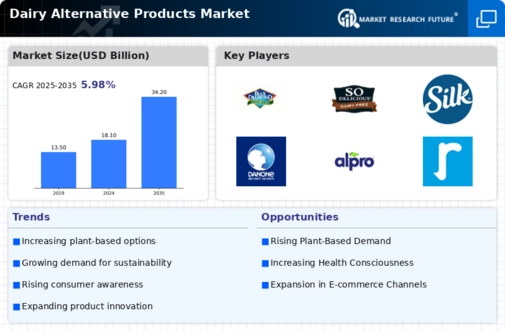
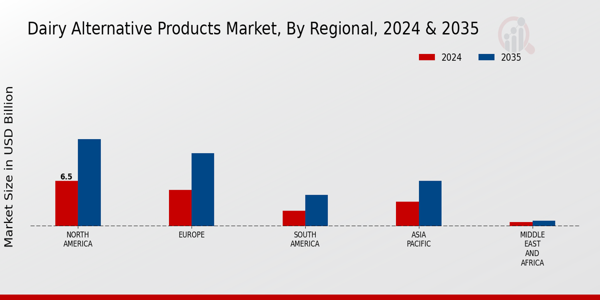
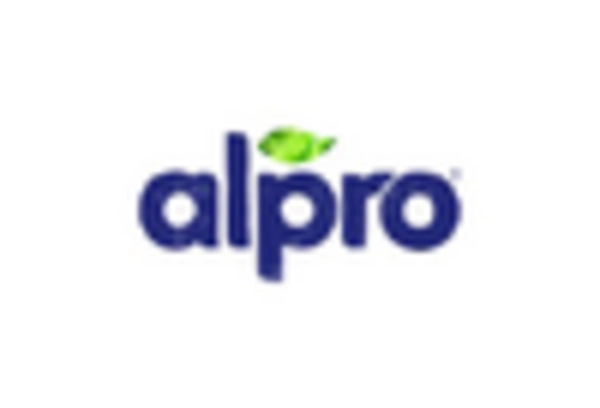
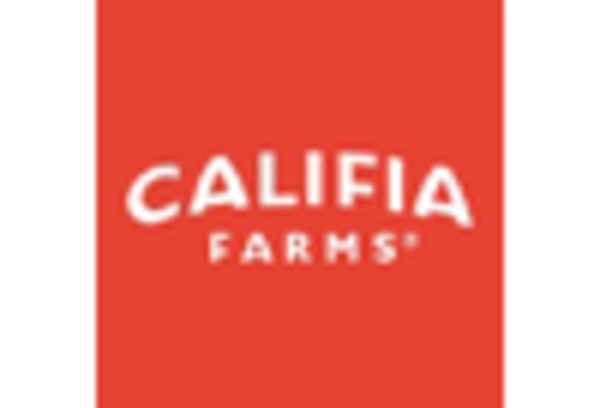
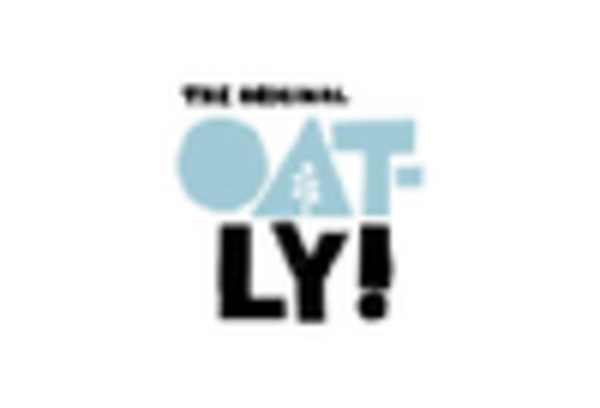

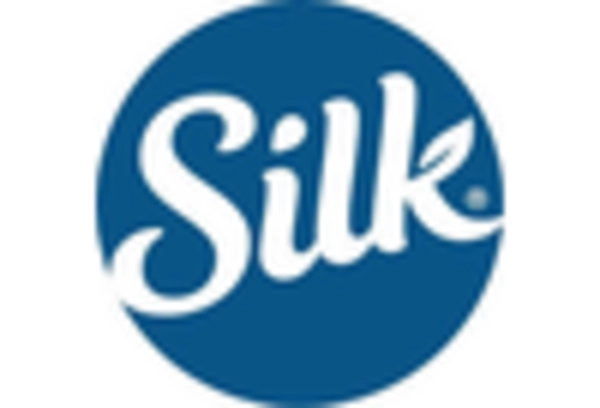
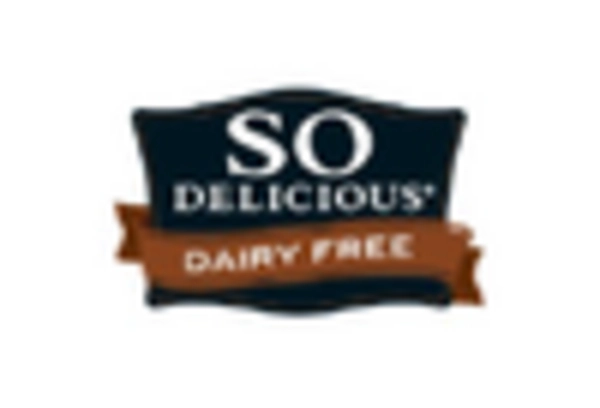









Leave a Comment